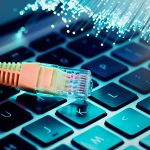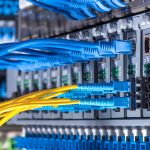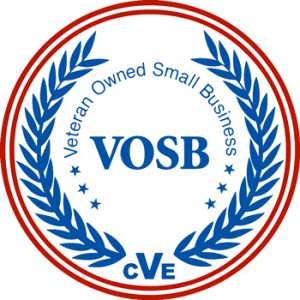Fiber Optic Cabling Solutions FAQs
CKC Data Solutions specializes in telecommunications infrastructure installation in Southwest Missouri and the surrounding areas.
Today, our expert team answers FAQs about fiber optic cabling solutions.
What are the two types of fiber optic cable?
Singlemode and multimode are the two main types.
What are the differences between single-mode and multimode fiber?
Single-mode fibers have a much smaller core size of 9 microns, but light can travel much longer distances of up to 60 miles.
Multimode fibers come in two core sizes, 62.5 and 50 microns. It is a lower-cost option compared to single-mode fibers, and it works best for data transmission of less than half a mile, such as through a facility like a warehouse.
Can you repair fiber optic cable?
Yes, technicians can repair these cables in the same way they splice them. They can remove the bad section completely before splicing together intact cables.
What is fusion splicing in fiber optics?
Fusion splicing involves welding two fibers together using a small electrical arc through a specialized device. Fusion splicing represents the better and more reliable of the two repair methods by providing less signal loss and less reflectance of the light traveling down the fiber. Fusing the cables has a stronger connection between the joints compared to mechanical splicing.
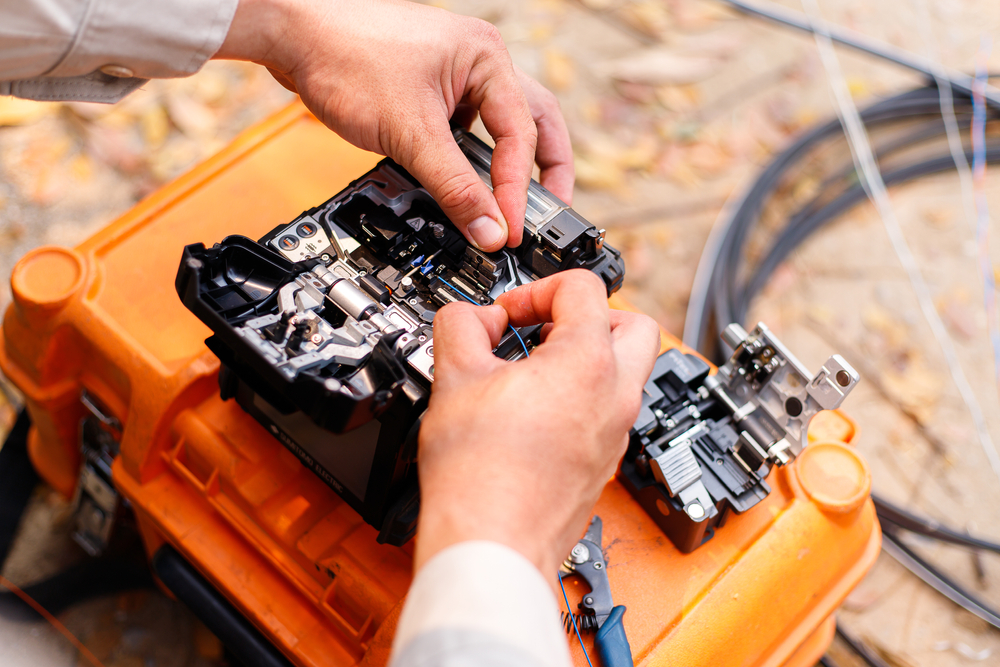
What is mechanical splicing in fiber optics?
Mechanical splicing is less precise than fusion splicing because it merely holds two ends of fibers together to allow light to pass through one fiber to the other. Mechanical splicing carries with it greater signal loss compared to fusion splicing.
How long does it take to fix a damaged fiber optic cable?
Depending on the location of the break and the conditions at the break site, typical repairs may take up to four hours.
How do fiber optic cables break?
Unfortunately, when damage to these cables occurs, it most often happens during the installation process due to careless installers.
Breaks usually occur when:
- The cable is pulled with too much force, or
- The fiber optic cable is bent too much.
Preventing damage during the installation highlights the main reason why you should protect your investment by hiring a certified, professional installer for your fiber optic solution.
How do I support, protect and maintain fiber optic cables?
You can do several things to protect and maintain your cables in a building.
- Don’t unplug or plug in fiber optic cables frequently. This can lead to damage. If you have cabling solutions that need to be plugged in a lot, use a short fiber extension because that is easier to replace than an entire length of cable.
- Keep cable connections clean at the transceiver connection, using specialized cleaning wands and a cable cleaning kit. Very tiny deposits of oil and dust in the transceiver connection can cause signal loss.
- Avoid bending fiber optic cables beyond their minimum bend radius. Don’t bend them into arcs smaller than a few inches. A basic guide is to not bend the cable to a distance less than 20 times its original diameter. For example, if the diameter of the cable is ½ an inch, don’t bend it to an arc of less than 10 inches in between both sides of the cable.
- Anchor these cables to prevent stress on the transceiver connection. Never let a fiber optic cable hang free from the connector.
- Place rubber safety caps on unplugged cables.
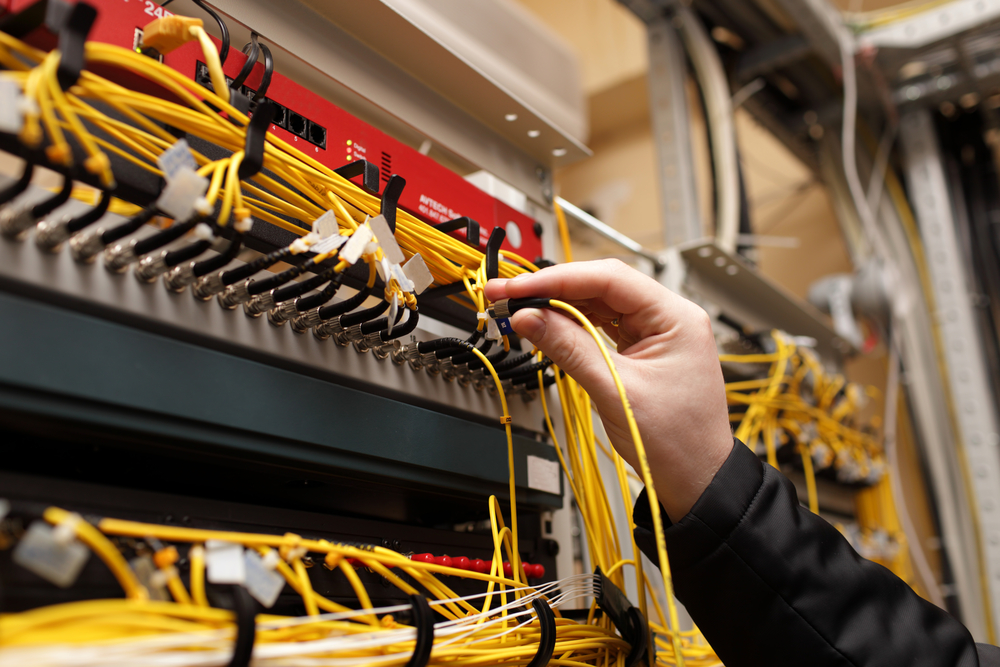
Why should I protect fiber optic cables?
Repairing or replacing these cables can become expensive, depending on the severity of the damage. Protecting your facility’s fiber optics makes your investment last longer. Professional installers like CKC Data Solutions can help you with tips and techniques to protect your telecommunications infrastructure.
Do fiber optic cables need power?
No, they do not because they simply transmit light from one location to another. However, you will need power for the transceivers to transmit the information through the glass cables.
Can fiber optic cables be hacked?
Yes, they can. But you can take several steps to protect your fiber optics from hacking and security breaches.
What are best practices for fiber optic security?
- Robust encryption. Invest in encryption software that delivers gibberish to any potential hackers.
- Maintain physical security around your transceivers where the cables attach to the transmission center. Cameras and access control represent two ways to keep these devices safe from potential physical threats.
- Network taps provide a way to test connections at key points in your facility. These are secure places that allow your IT department to detect network intrusions (if any).
How are fiber optics protected?
These cables have three main layers of protection:
The innermost layer is the core of the fiber optic cable that contains the glass fiber where the light signal travels.
Cladding surrounds the core. This layer reflects light back into the glass strand.
A buffer coating covers the cladding. It’s made of plastic to protect the inside layers from moisture and damage.
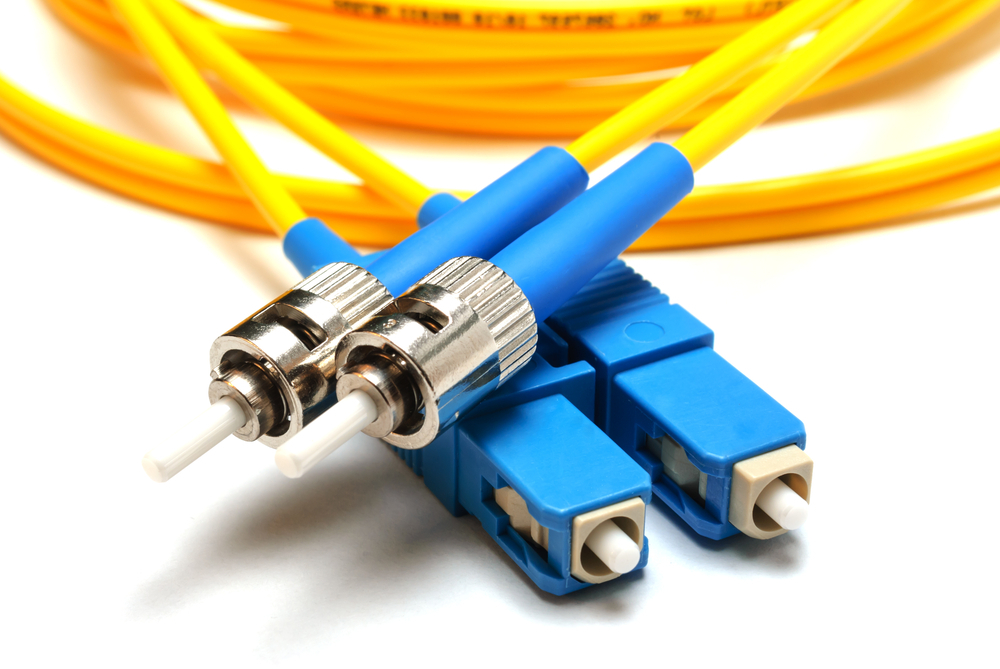
Does fiber optic cable have to be in its own conduit?
Yes, cables must be in their own conduits and separate from copper wires.
Conduits offer effective protection from water and other elements. Air-blown fiber optic cables need conduits that allow for pressurized air movement when blowing more fiber into your telecommunications infrastructure.
Are fiber optic cable solutions worth it?
Absolutely, based on your company’s needs.
A professional installation company will take into account several factors when they determine what cabling solutions are right for you.
- Facility size. Do you have a 25,000-square-foot warehouse or a 5,000-square-foot office? Distance matters when it comes to light traveling through multimode fiber optic cables.
- Data needs. How much data do you need transmitted throughout the day? What type of data is it? Are you streaming video at your facility? Do you have a large bank of phones? Do you need video conferencing rooms for remote meetings? What bandwidth do you require? What about wireless dead zones? Professional cable installers can help you develop a customized fiber optic cabling solution that meets your needs for today and 20 years from now.
- Future-proofing your telecommunications. Telecom companies continue to improve infrastructure based on data streaming, video streaming, and 5G networks. Your business must keep pace with these new standards. Fiber optic cable solutions installed now can make sure your telecommunications infrastructure can easily expand in 10 to 20 years because technology continues to evolve.
Who can install fiber optic cable solutions for my business?
Professional and certified installers represent an excellent investment for your fiber optic cabling solution. We install fiber at your business, facility, corporate office, or warehouse. Contact CKC Data Solutions or call (417) 812-5251 for more information on how we can help!



